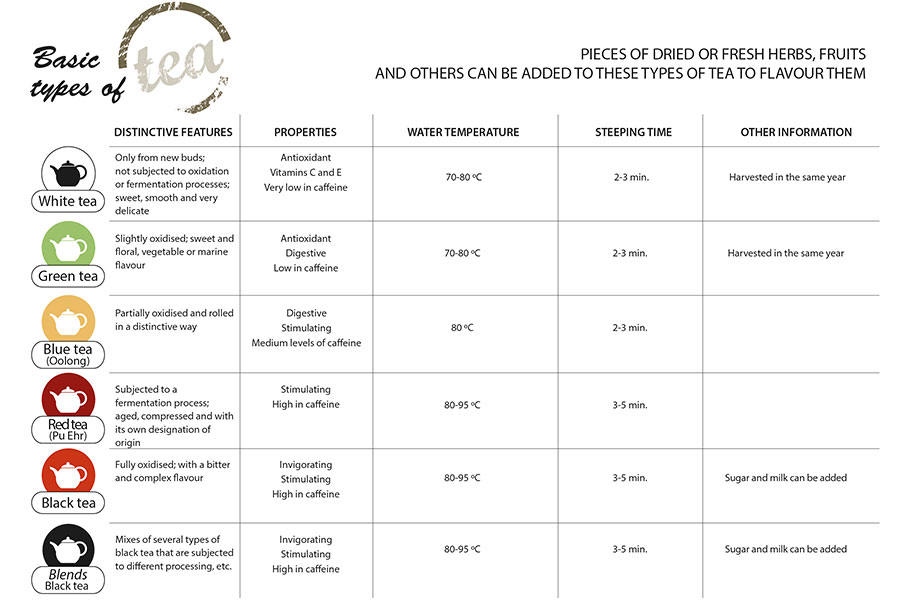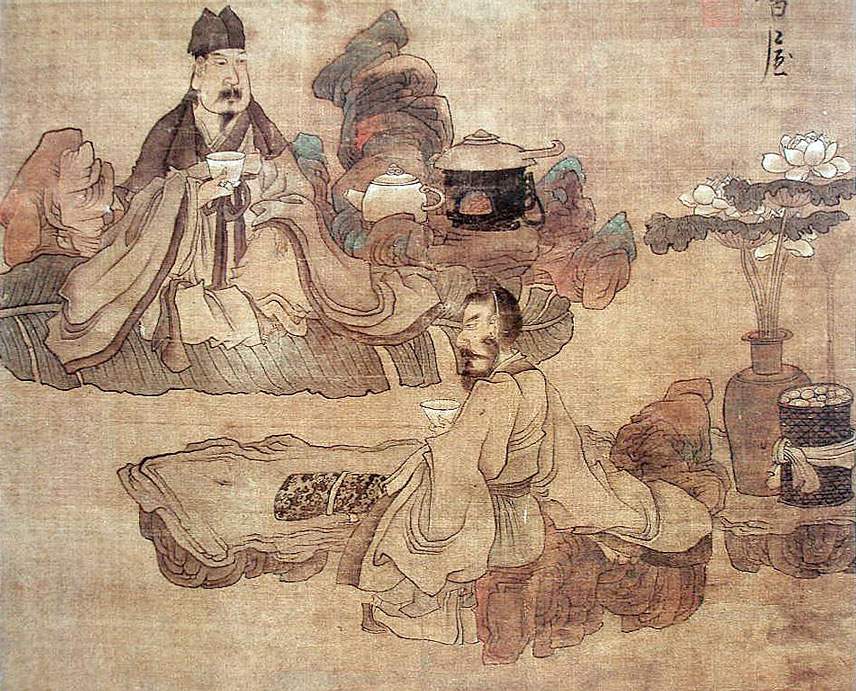 Web Content Display
Web Content Display
Tea plantation
Did you know that the camellia, besides being a beautiful plant, is good for your health? It produces one of the healthiest and most widely consumed beverages in the world.
All types of tea are exclusively obtained from C. sinensis; which is why it is the most important Camellia species in the world. To produce it, buds and leaves are harvested and left to dry. Depending on the production process, different types of tea can be obtained.
There are four methods for processing tea from the leaves and buds of C. sinensis.
White tea. Obtained from new buds harvested in early spring, before they open. It is low in caffeine and high in polyphenols and vitamins.
Green tea. It is not subjected to an oxidation process; buds and leaves are allowed to dry once harvested. It is low in caffeine and contains high amounts of polyphenols and vitamins.
Oolong tea. It is partially oxidised; it lies between green tea and black tea, having more caffeine than green tea and less than black tea.
Red tea and black tea. They are fully oxidised, so they are high in caffeine and have a more intense aroma.

History:

The use of tea for medicinal purposes dates back to the Zhou Dynasty (1,000 B. C.), in China. Thanks to its high content in catechins, which are anti-oxidant, anti-aging and even anti-carcinogenic substances, tea has been highly valued for its benefits.
It first arrived in Europe in the 17th century, imported as dried leaves as part of the Spanish queens’ dowry. Then, the tradition of drinking this tasty and energetic beverage quickly spread in England.
TThey tried to obtain some specimens of live plants instead of dried leaves. However, the Chinese wished to keep the secret and their business running (a pound sterling was paid for every 125 grams of tea), so they sent The English another camellia species, with very beautiful flowers but with leaves that lacked flavour and aroma. Therefore, the first camellia plant, a specimen of Camellia japonica, arrived in Europe.
As the Europeans could not import the plants, they decided to expand and dominate tea production in the countries of origin and promoted its consumption worldwide.
In Pontevedra, the plant is listed in the plant catalogue of the School of Agriculture of A Caeira in 1882 as Thea veridis, with a price of 2 pesetas (currency of Spain between 1868 and 2002).
At present, the research centre Estación Fitopatolóxica Areeiro (EFA) belonging to the Deputación de Pontevedra is producing, promoting and disseminating the Galician tea.
Tea plantation at the Soutomaior Castle:
The camellia plant, symbol of As Rías Baixas, is well-represented in the garden of the Soutomaior Castle. In fact, it was the first garden in Spain to be recognised as an International Camellia Garden of Excellence, an award granted by the International Camellia Society in 2012.
In the botanical park of the castle there are 18 C. japonica dspecimens from the 19th century, purchased by the marquises of Vega de Armijo y de Mos. In 1982, the Deputation of Pontevedra bought the property and decided to promote and improve the camellia collection. Between 1986 and 1987, dozens of camellias were planted, but the project is still in progress, and every year new specimens are added. At present, there are hundreds of camellia specimens belonging to many species.
The last initiative has been the creation of a C. sinensis garden, including 72 specimens of this plant. This will allow organising guided tours, informative guides for schoolchildren and activities to promote the first tea harvest.
 Web Content Display
Web Content Display
Tea plantation
Did you know that the camellia, besides being a beautiful plant, is good for your health? It produces one of the healthiest and most widely consumed beverages in the world.
All types of tea are exclusively obtained from C. sinensis; which is why it is the most important Camellia species in the world. To produce it, buds and leaves are harvested and left to dry. Depending on the production process, different types of tea can be obtained.
There are four methods for processing tea from the leaves and buds of C. sinensis.
White tea. Obtained from new buds harvested in early spring, before they open. It is low in caffeine and high in polyphenols and vitamins.
Green tea. It is not subjected to an oxidation process; buds and leaves are allowed to dry once harvested. It is low in caffeine and contains high amounts of polyphenols and vitamins.
Oolong tea. It is partially oxidised; it lies between green tea and black tea, having more caffeine than green tea and less than black tea.
Red tea and black tea. They are fully oxidised, so they are high in caffeine and have a more intense aroma.

History:

The use of tea for medicinal purposes dates back to the Zhou Dynasty (1,000 B. C.), in China. Thanks to its high content in catechins, which are anti-oxidant, anti-aging and even anti-carcinogenic substances, tea has been highly valued for its benefits.
It first arrived in Europe in the 17th century, imported as dried leaves as part of the Spanish queens’ dowry. Then, the tradition of drinking this tasty and energetic beverage quickly spread in England.
TThey tried to obtain some specimens of live plants instead of dried leaves. However, the Chinese wished to keep the secret and their business running (a pound sterling was paid for every 125 grams of tea), so they sent The English another camellia species, with very beautiful flowers but with leaves that lacked flavour and aroma. Therefore, the first camellia plant, a specimen of Camellia japonica, arrived in Europe.
As the Europeans could not import the plants, they decided to expand and dominate tea production in the countries of origin and promoted its consumption worldwide.
In Pontevedra, the plant is listed in the plant catalogue of the School of Agriculture of A Caeira in 1882 as Thea veridis, with a price of 2 pesetas (currency of Spain between 1868 and 2002).
At present, the research centre Estación Fitopatolóxica Areeiro (EFA) belonging to the Deputación de Pontevedra is producing, promoting and disseminating the Galician tea.
Tea plantation at the Soutomaior Castle:
The camellia plant, symbol of As Rías Baixas, is well-represented in the garden of the Soutomaior Castle. In fact, it was the first garden in Spain to be recognised as an International Camellia Garden of Excellence, an award granted by the International Camellia Society in 2012.
In the botanical park of the castle there are 18 C. japonica dspecimens from the 19th century, purchased by the marquises of Vega de Armijo y de Mos. In 1982, the Deputation of Pontevedra bought the property and decided to promote and improve the camellia collection. Between 1986 and 1987, dozens of camellias were planted, but the project is still in progress, and every year new specimens are added. At present, there are hundreds of camellia specimens belonging to many species.
The last initiative has been the creation of a C. sinensis garden, including 72 specimens of this plant. This will allow organising guided tours, informative guides for schoolchildren and activities to promote the first tea harvest.




 TICKETS
TICKETS


